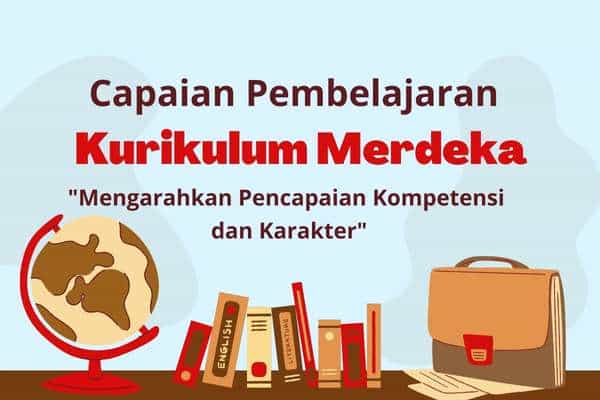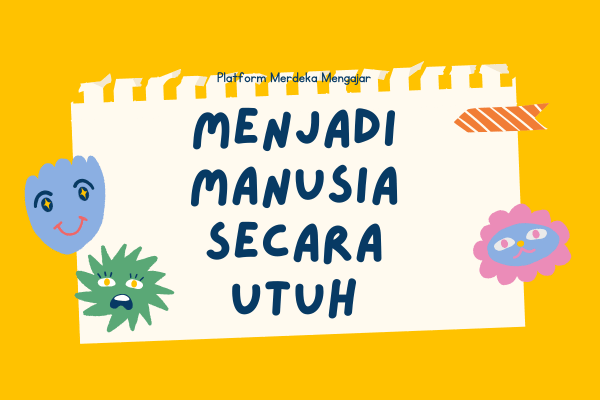Learning Achievement in the Curriculum: Guiding Competence and Character Attainment
Position of Learning Achievement in the Merdeka Curriculum
In the previous topic, we have learned about what learning achievements are and how to formulate them. In this article, we will discuss the position of learning achievement in the Merdeka Curriculum. In the structure of the Merdeka Curriculum, learning achievement or LA (CP) serves as a reference for intracurricular learning. The competencies in the learning achievement are derived as learning objectives organized in a sequence for each phase. This sequence is called the Learning Objective Sequence or LOS (ATP), which is then used to develop lesson plans and learning strategies.
In previous intracurricular learning, competencies encompassed the domains of attitudes, knowledge, and skills, each standing on its own. However, competencies should not be separated because they form a unity. This becomes the basis for formulating competencies in the Learning Achievement.
Competencies involve the 'package' learning process of scientific concepts, ranging from understanding a concept to attitudes in learning, such as learning motivation and curiosity. Competencies also include the ability to describe knowledge and skills to achieve higher cognitive demands, such as proposing creative solutions rather than just answering questions. When teachers assess competency mastery, the assessment directly covers all three domains: attitudes, knowledge, and skills. Therefore, there is no need to separate the assessment; it is sufficient to focus on the competencies outlined in the learning achievement as we have previously learned.
Developing Learning Achievements
Learning achievements are developed by considering the stages of students' developmental milestones according to their age. This is part of the concept of 'Teaching at the Right Level' or teaching at the appropriate learning stage. This concept is one of the spirits of Merdeka Belajar. Through this concept, students receive learning tailored to their initial level or ability. To support Teaching at the Right Level, teachers can conduct diagnostic assessments to map students' profiles. Afterward, students can be grouped according to their initial competencies. Thus, teachers can develop their teaching based on these initial competencies, rather than solely relying on age and grade. Teachers can differentiate learning activities and content to ensure that each student has the opportunity to achieve the expected competencies and develop as individuals. This condition is known as differentiated learning.
Implementing Teaching at the Right Level
One application of the Teaching at the Right Level principle is when a condition is identified where a student in grade 8 of junior high school has not yet reached the expected level of competence. Teachers need to provide appropriate interventions according to the student's current ability, without waiting until the end of the year. Interventions are carried out to meet the student's learning needs so that they are prepared to receive the teaching at the level of grade 8 of junior high school. Another example is when there is a student in grade 5 of elementary school who should be in phase C in reading ability but is still in phase B. Teachers can adjust the learning according to the student's reading ability while providing appropriate interventions to improve the student's reading ability according to their stage.
Learning achievement represents the competencies and character to be achieved. The formulated competencies are also described as a unity. Learning achievement serves as a reference for developing learning objectives in the classroom. The learning process should provide opportunities for students to learn according to their initial competencies.
You can learn more about the implementation of the Teaching at the Right Level concept in adjusting learning to the needs and characteristics of students. By adopting this concept, teachers can ensure that each student receives learning that corresponds to their level of ability, thereby enhancing learning achievements effectively.
Conclusion
Learning achievement plays a crucial role in the curriculum. Through learning achievement, learning objectives are established, and learning strategies are developed. The Merdeka Curriculum emphasizes Teaching at the Right Level, where learning is adjusted to students' initial abilities. By implementing this approach, teachers can ensure that every student has an equal opportunity to achieve the expected competencies and develop optimally. The implementation of the Teaching at the Right Level concept also helps meet the needs and individual characteristics of students, creating an inclusive and effective learning environment. Therefore, understanding and implementing learning achievements in the curriculum are essential steps in achieving quality education and providing equal opportunities for all students.







